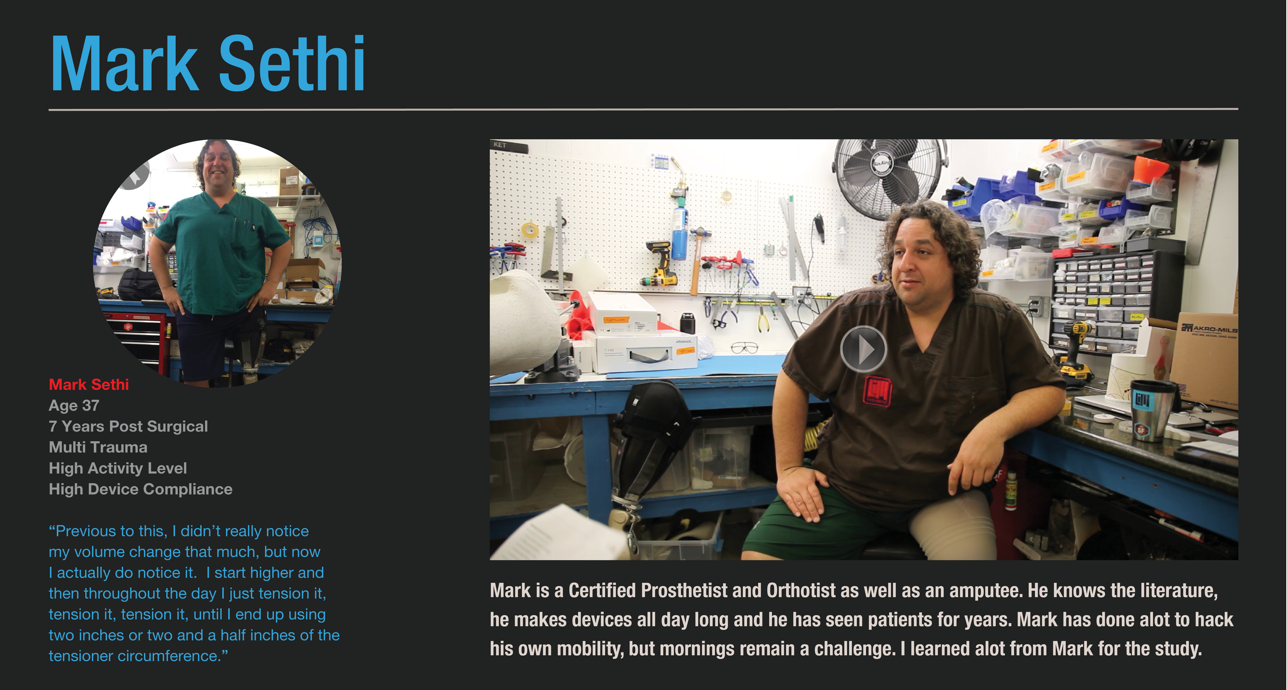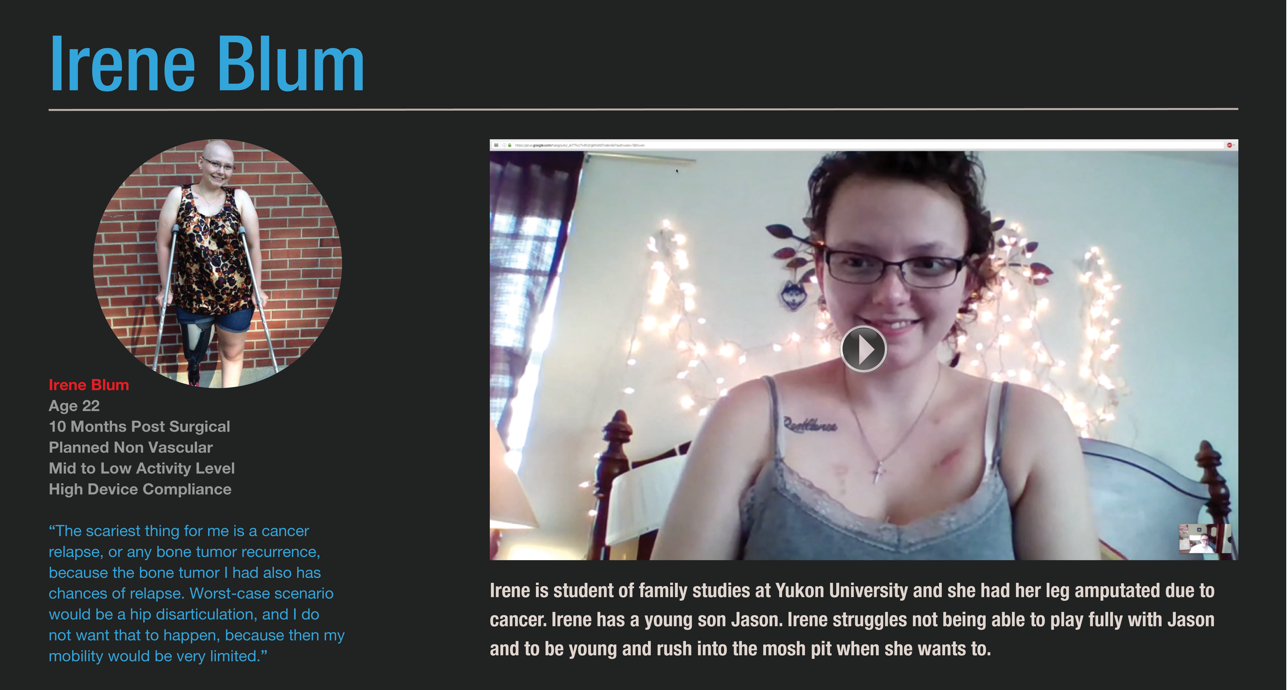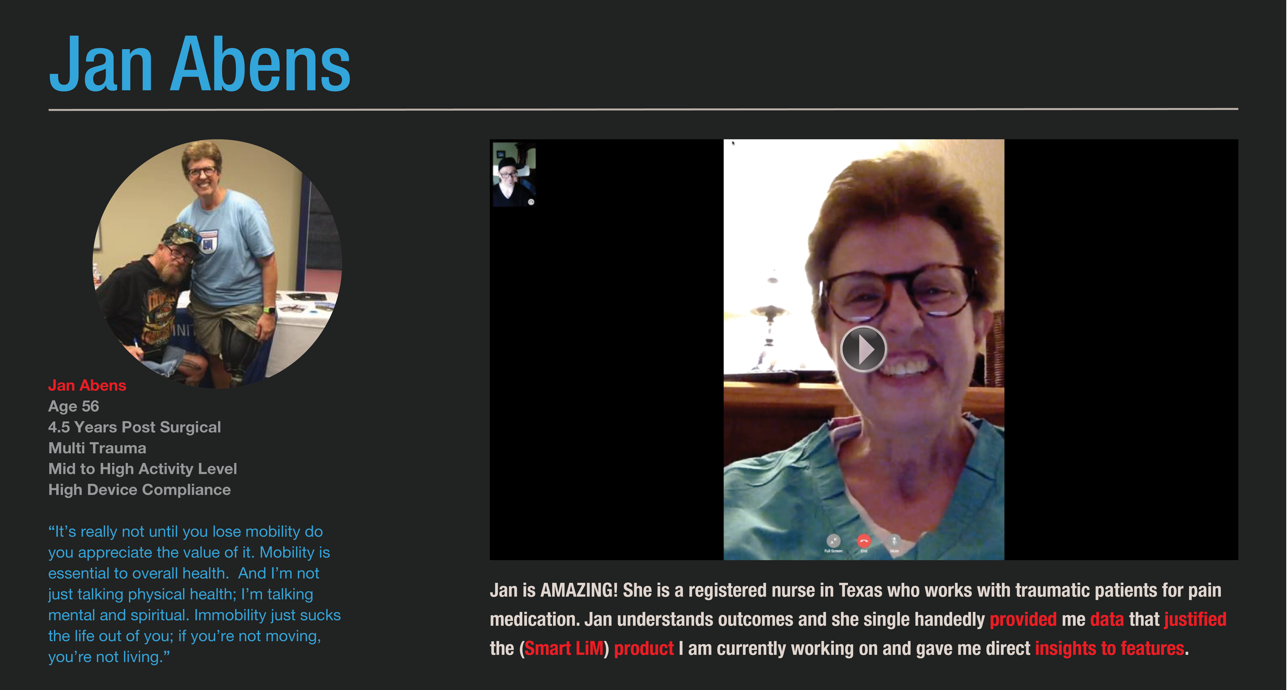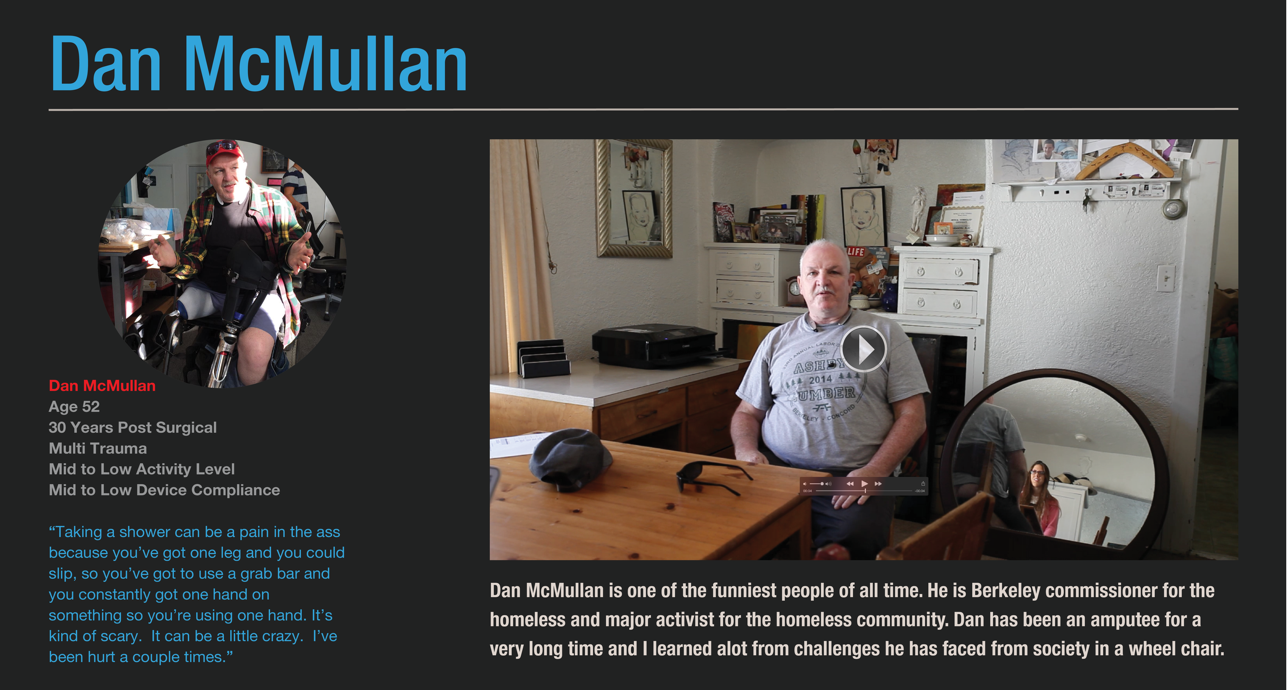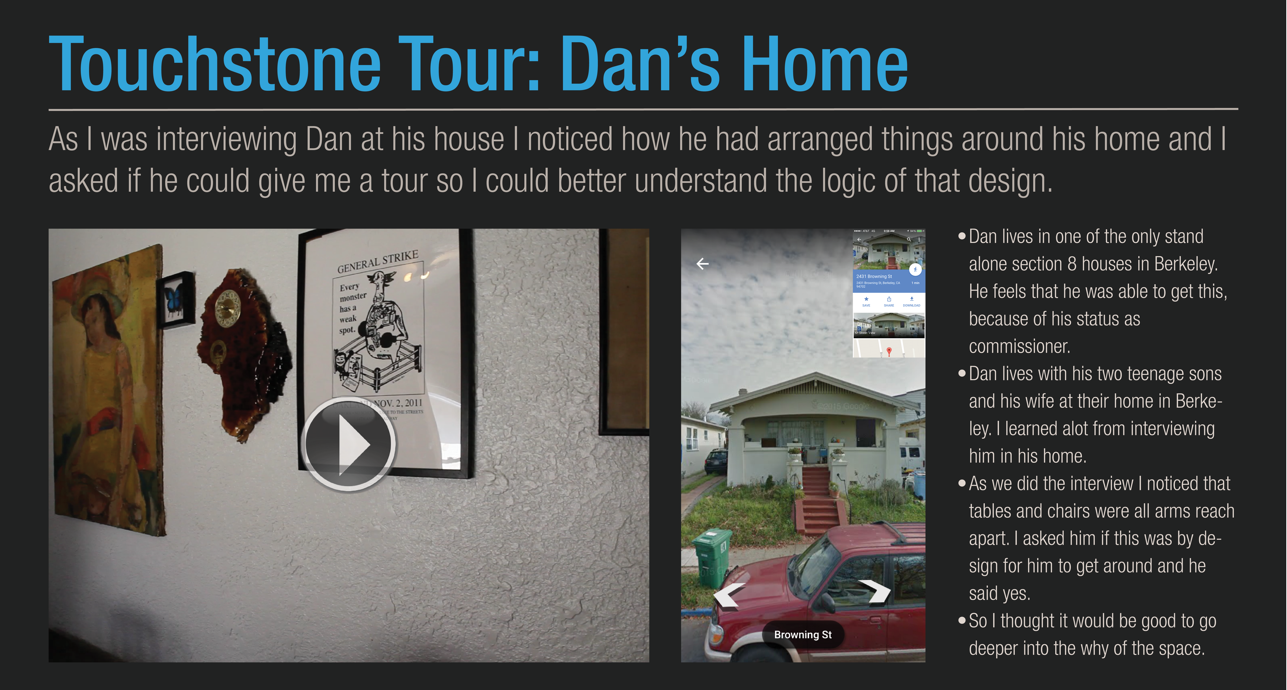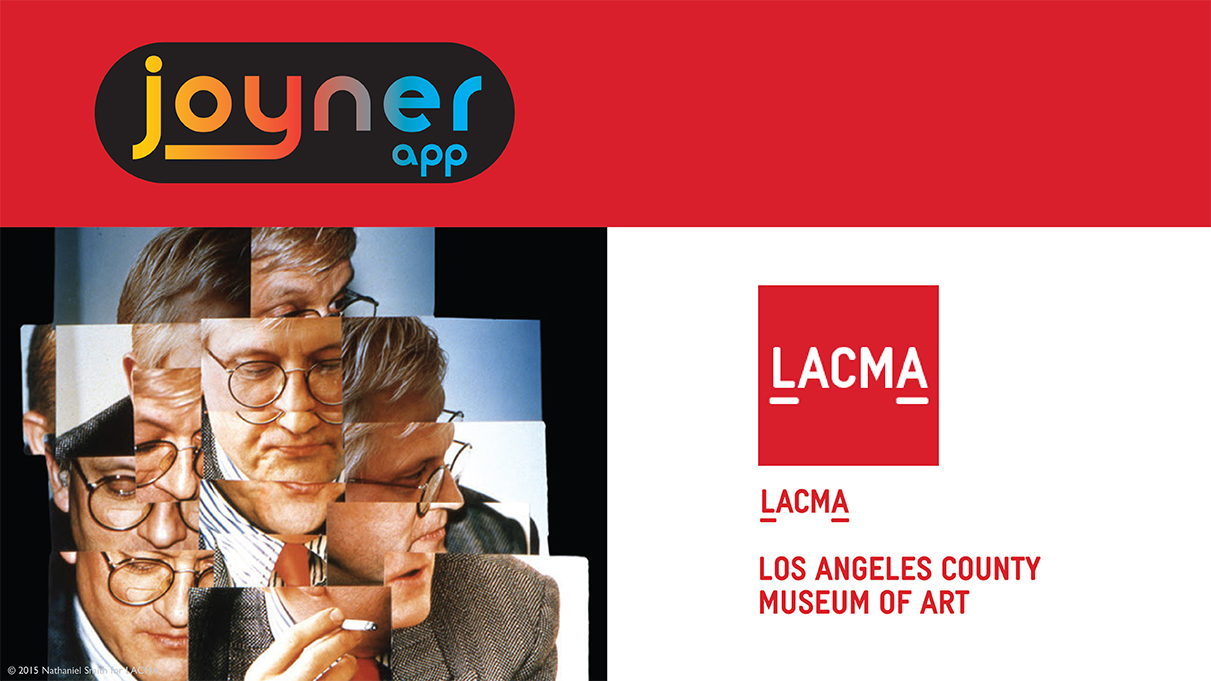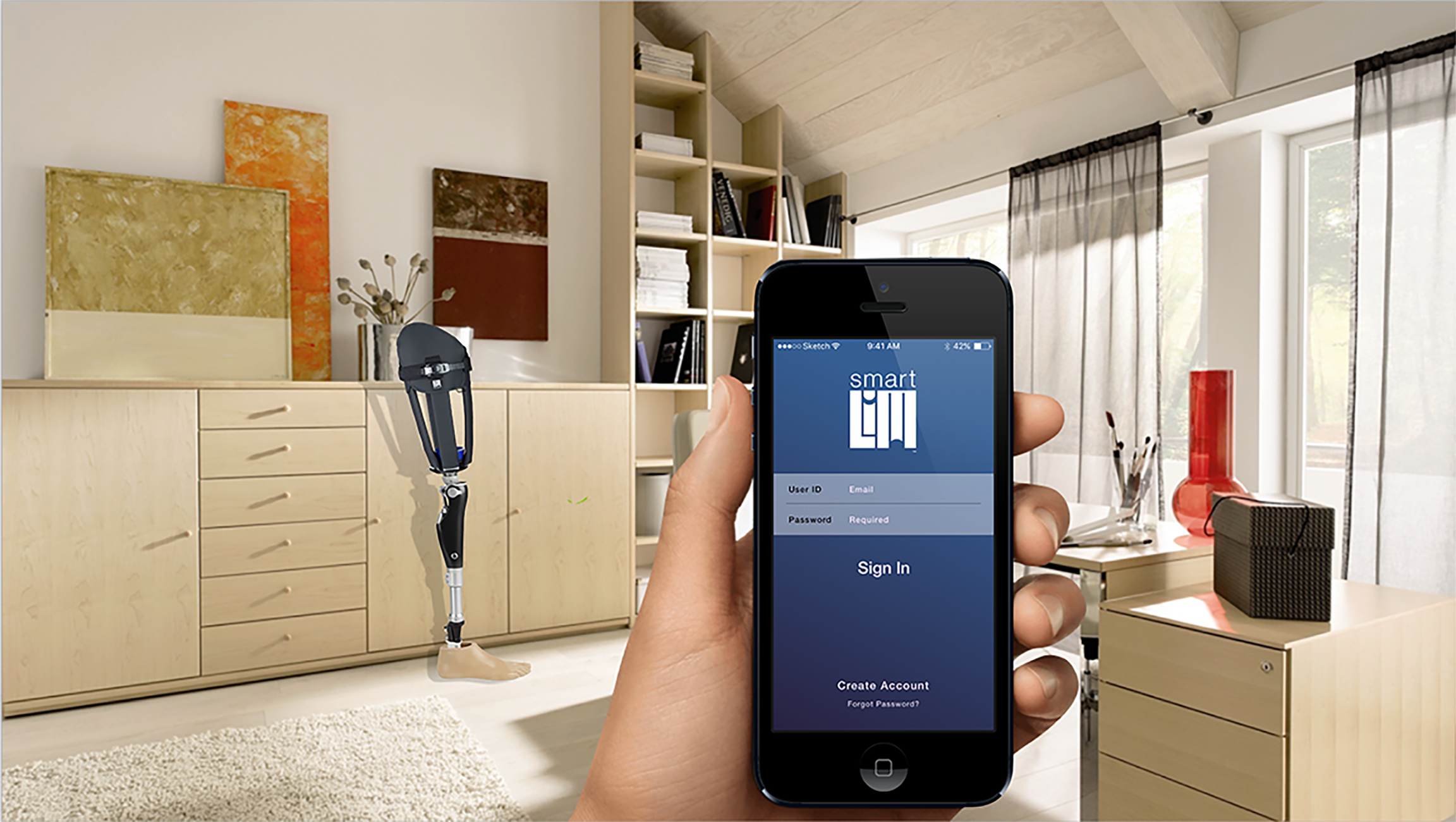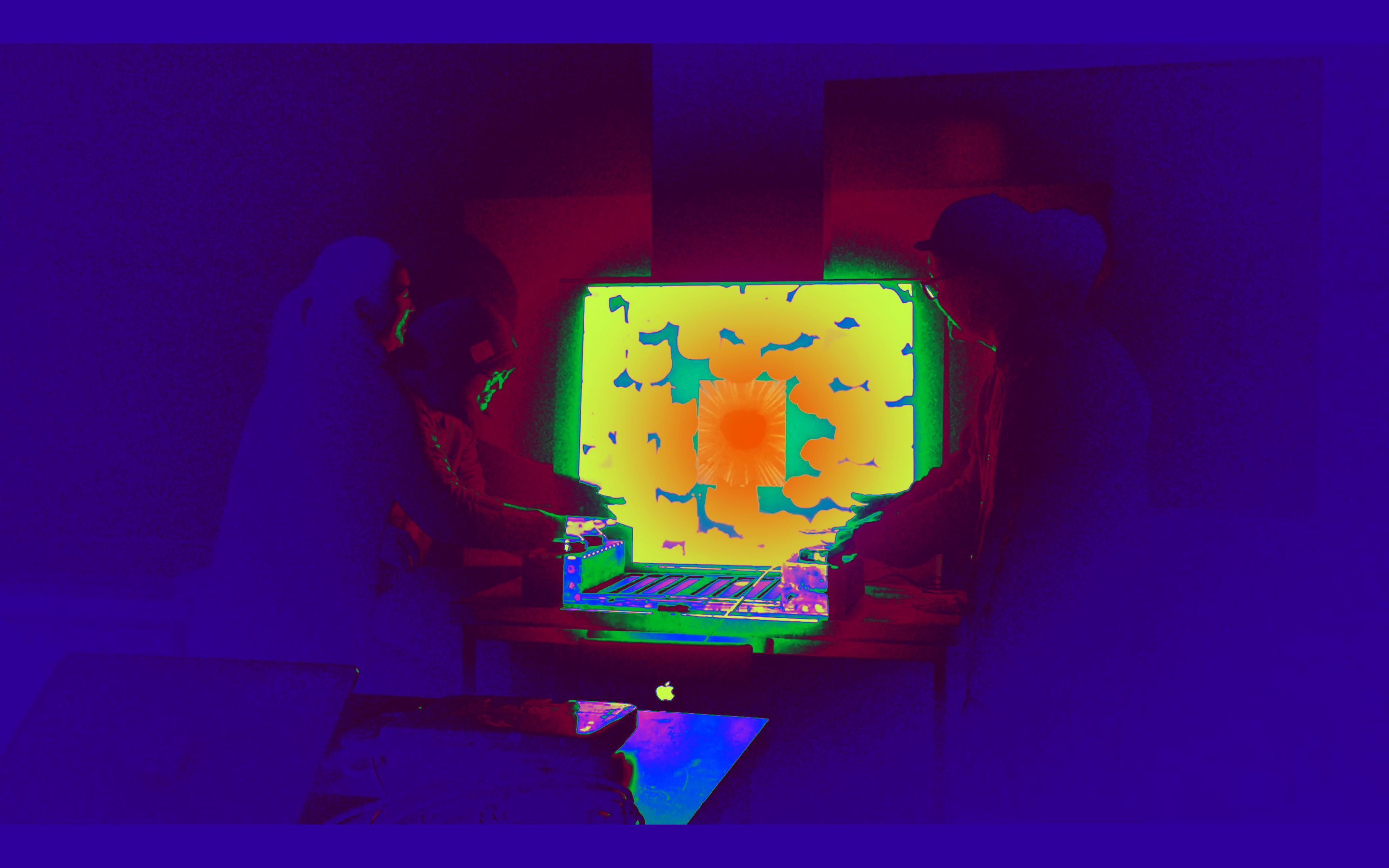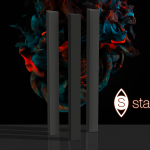Smart Lim Design Research Exploratory Study: Volume and Mobility Change
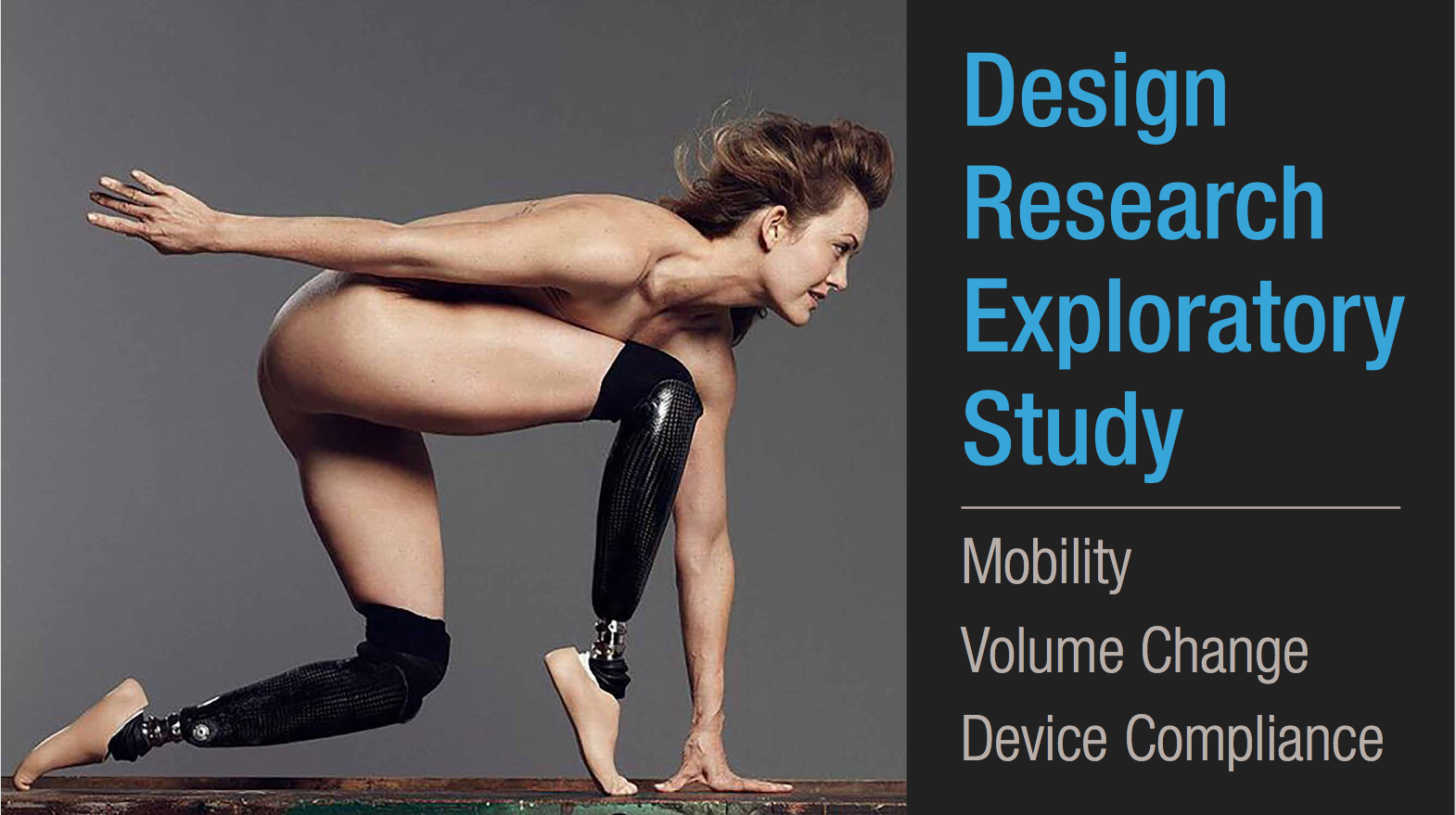
Introduction
The SmartLIM exploratory study was focused around mobility and device compliance. The first study was purely devoted to empathizing with the population and understanding their needs; where their needs are being met and where they are not. This study employed multiple research methods of input, both qualitative and quantitative. Our core methodology follows Indi Young’s Mental Model structure for research and synthesis.
Research Objective
The purpose of our research is to listen to experiences from the amputee community in an effort to better understand the factors that contribute to their everyday mobility and use of their prosthesis, with an emphasis on volume change and device compliance.
WHAT WE DID
• Seven moderated 90 min interviews with amputees age 23 to 65
• IRB Approved 26 Person Survey
• 6 person diary study using wearable tech and volumetric specs
What We Want To Know
• Time worn all day
• Volume change
• Step count and activity
Why we want to know it
Because volume change is so unknown we can’t solve for it and people aren’t wearing their devices because of injury and fatigue.

Context Why This Matters…
About three years ago, I met my new brother-in-law, Chris. He is a below-knee amputee from acute trauma. He lost his leg in a motorcycle accident. I learned about some of the challenges that he faced, and because of this I wanted to help. Chris is a super physical guy. He is a mechanic by trade, has 4 kids, and lives on a large piece of property. His mobility is everything to him and I wanted to help. While working on a solution for him, I met Lim, and when I learned about what they were doing, I knew I had to be part of it.
Problem and Product Solution

Related Surgical Procedures

Research Methodology

1. Secondary Research
- Read medical literature to uncover best methods for capturing volume metrics and IRB approved surveys.
- Clinical ECB interviews for tools.
- Internet research on the final tool measurement selections.
2. Quantitative Research
- Build out online survey
- Recruit Participants
- Design & deploy diary study to moderated participants.
- Review and synthesize GUPEA survey results into insights.
3. Qualitative Research
- Moderated interviews with six above-knee amputees, two in person and four remote interviews.
- Filmed touchstone guided tour through one participant’s home.
4. Synthesis
- Compiled all interview transcripts into one database document.
- Created Indi Young mental models.
- Refined mental model into insight statements.
- Final summary insights



Anthony and Kate were my internal partners and subject matter experts for the research I conducted. They helped guide me to the exact resources I needed to supplement the specific approach I laid out.

Survey & Insights
Once the survey came back in, we crunched all of the data and responses that we received. We experienced some surprising anomalies. The most surprising was that one of participants falls around 35 times a week. We were able to glean a number of potential product-oriented solutions from what we learned here. It certainly framed how we should be moving forward with moderated interviews.
Slideshow (Hover to Pause)
Diary Study
Given that volume change and device compliance were things we really hoped to understand at a fundamental level from this study, we decided doing a diary study was our best method for acquiring all of this information. We asked participants to wear a misfit watch to track their activity and their sleep. We asked them to take circumferential measurements of their terminated limb three times a day and answer some basic qualitative information so we could the results and behavior of our participants.
Slideshow (Hover to Pause)
Research Participants
Our research group started with six participants, and grew to be seven after a request to add some specific military personnel. This group was incredibly diverse and I continue to be inspired by all of these individuals. We learned an incredible amount from this group about what was important to them in their mobility, and we took a huge amount away for what SmartLIM should be as a product.
Slideshow (Hover to Pause)

Next Steps: Indy Young Mental Model
I was the only one doing the work on this project and we had an incredible amount of data. I made it into stage 4 of the model below, but by the time we reached stage 4 we had more than enough to produce a system architecture map, and to push out a large set of potential features. Our deadline to present to the Office of Naval Research was quickly approaching, so we pivoted to doing generative work and prototyping the product. We plan to come back and finalize the towers through a complete mental model to pull out future product features for future releases of the product, beyond the MVP we agreed upon.

Summary at Stopping Point
There were numerous clips from my interviews that showed behavior where patients were already using smart devices to increase their mobility. Through those interview clips, that I am unable to show in this forum, we concluded that we had more than enough justification to move forward with product development. I put this high-level summary together below, and then we moved straight into building out the system architecture and product development.





















